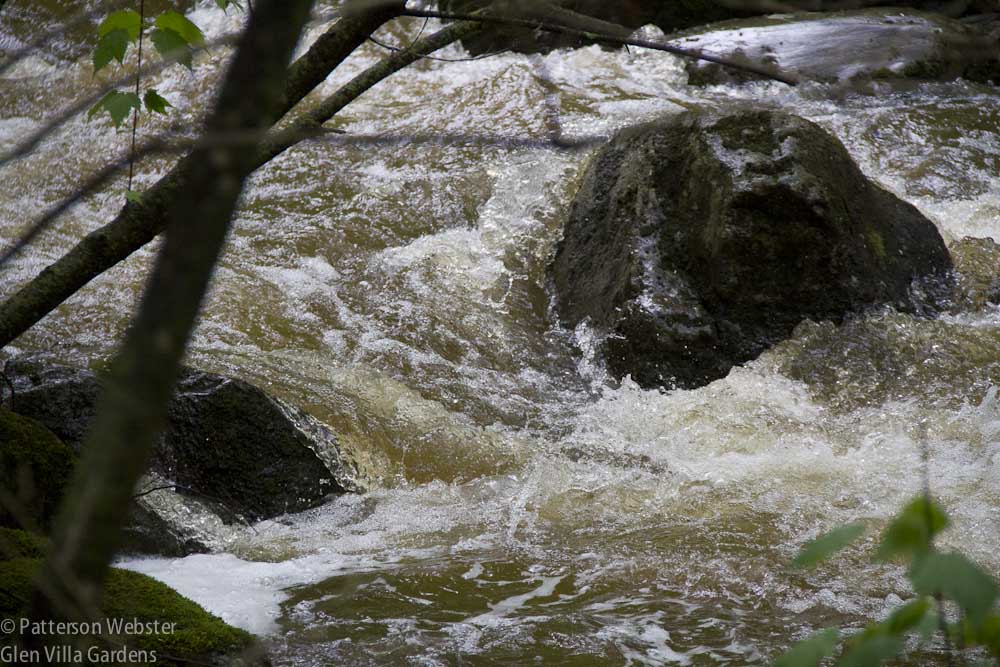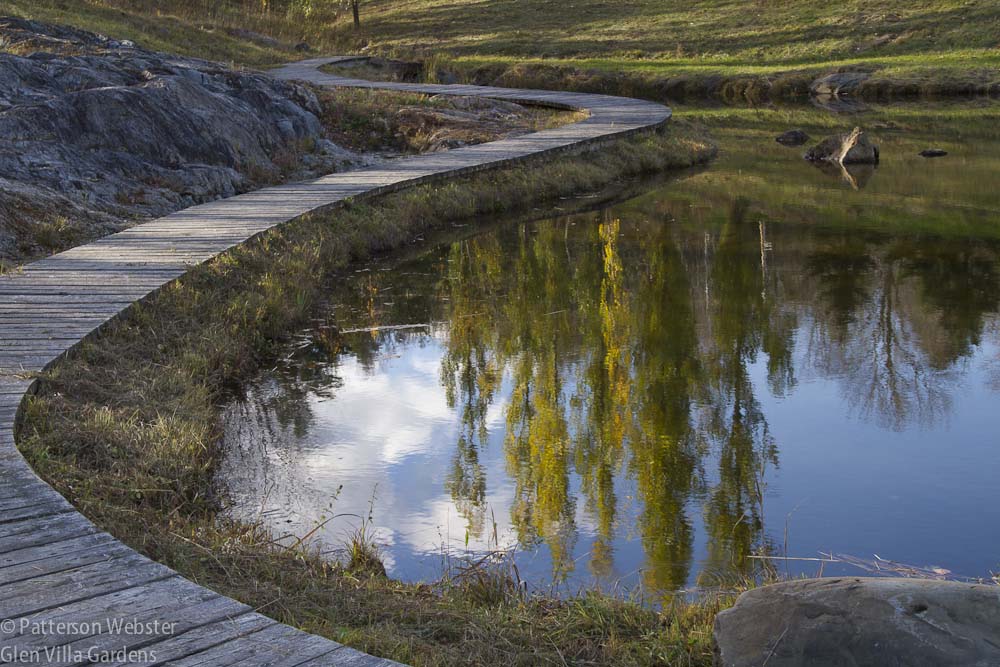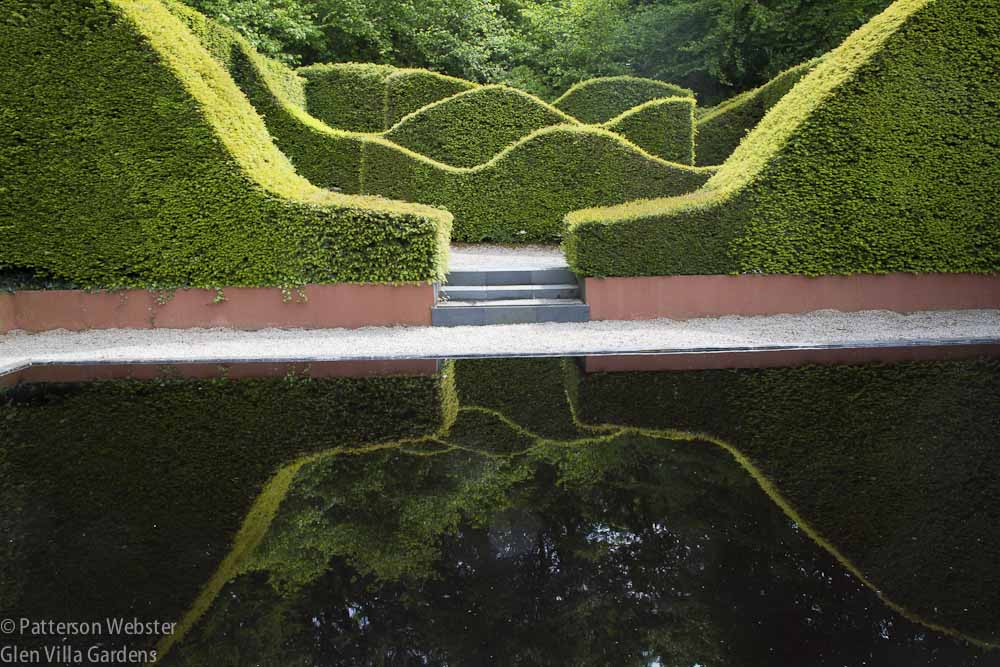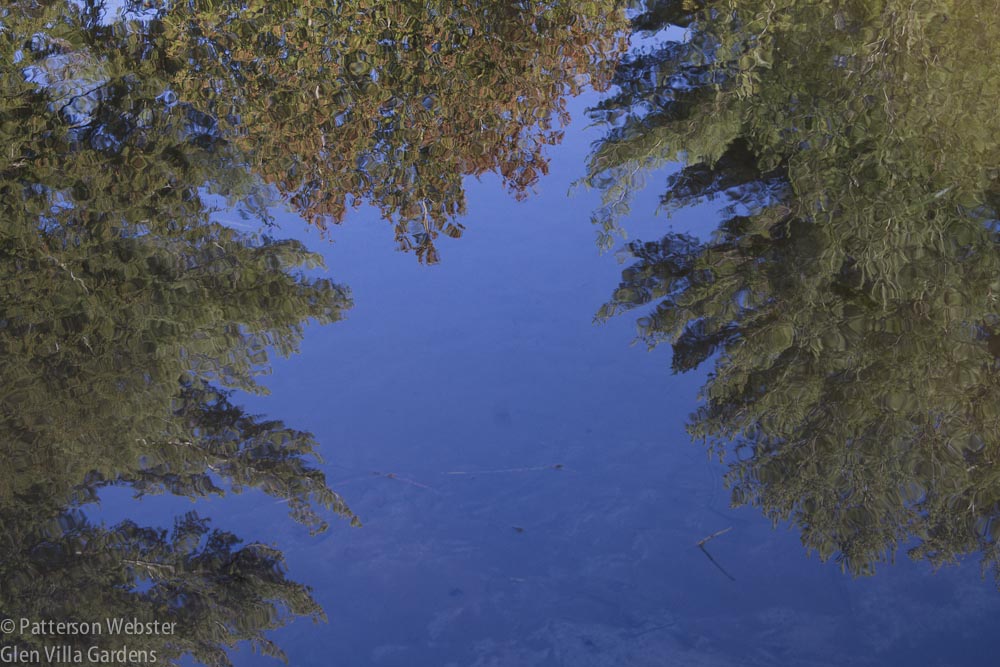Who could walk past this scene without pausing to admire the clouds reflected in the water below?
Reflections show the world around us. They can reveal aspects of a scene we might otherwise miss. They are — or can be — great additions to any garden. But using them well requires thought and planning.
Water is one of the easiest reflecting surfaces to include in a garden. But before proceeding willy-nilly, consider the effect you want to achieve. Do you want the water to reflect the sky alone, or to say something about the setting of the garden, as the tiny pool in this English garden does?
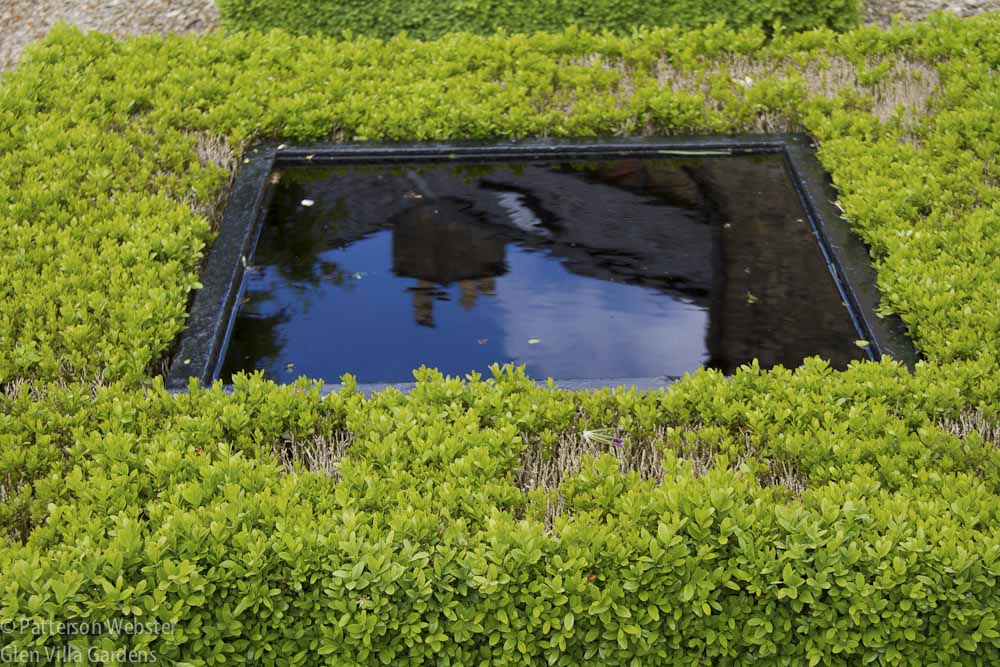
A square pool surrounded by boxwood at Gothick House, the garden of photographer Andrew Lawson, reflects the sky and the surrounding rooftops.
You may want to avoid reflecting some views: telephone poles, power lines, garbage. Or you may choose to include them deliberately, to make a statement about your garden and its position in the world.
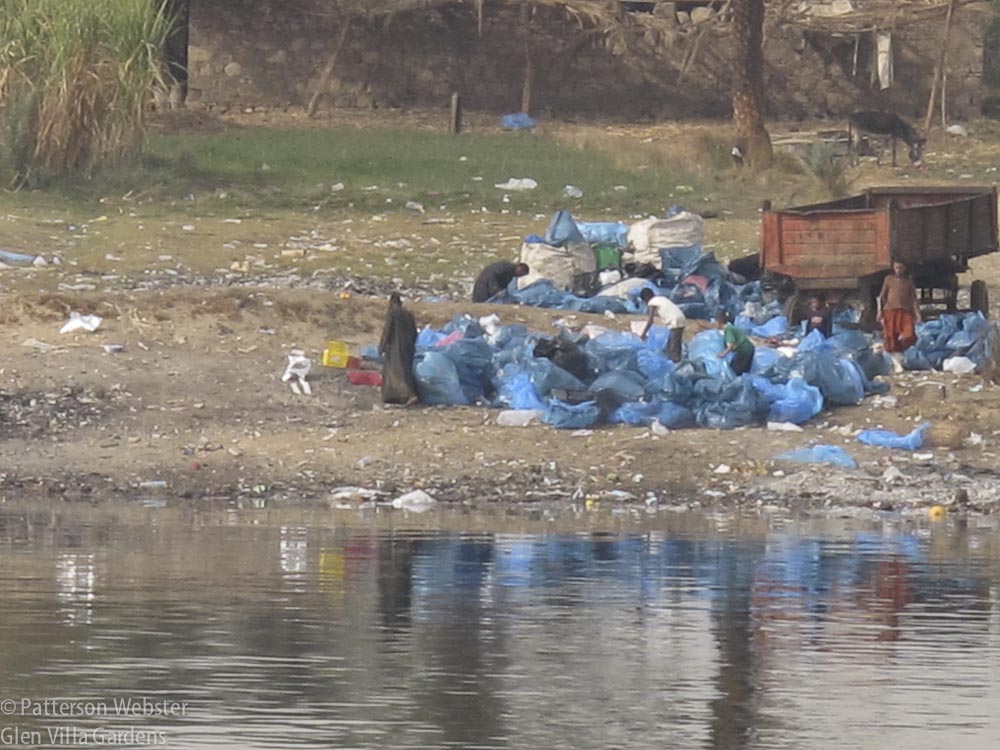
Garbage is reflected in the waters of the Nile in Egypt. I doubt this reflection was chosen deliberately. But it does make a statement.
What you choose to reflect is one question. What you want the reflection to accomplish is another. Do you want to show a mirror image? Depending on the angle of the view and the angle of the light, still water reflects what is around it quite accurately. Or it can. Sometimes the reflection is clearer and more striking than the thing itself. In the photo below, the sky appears bluer in reflection than it is in reality.
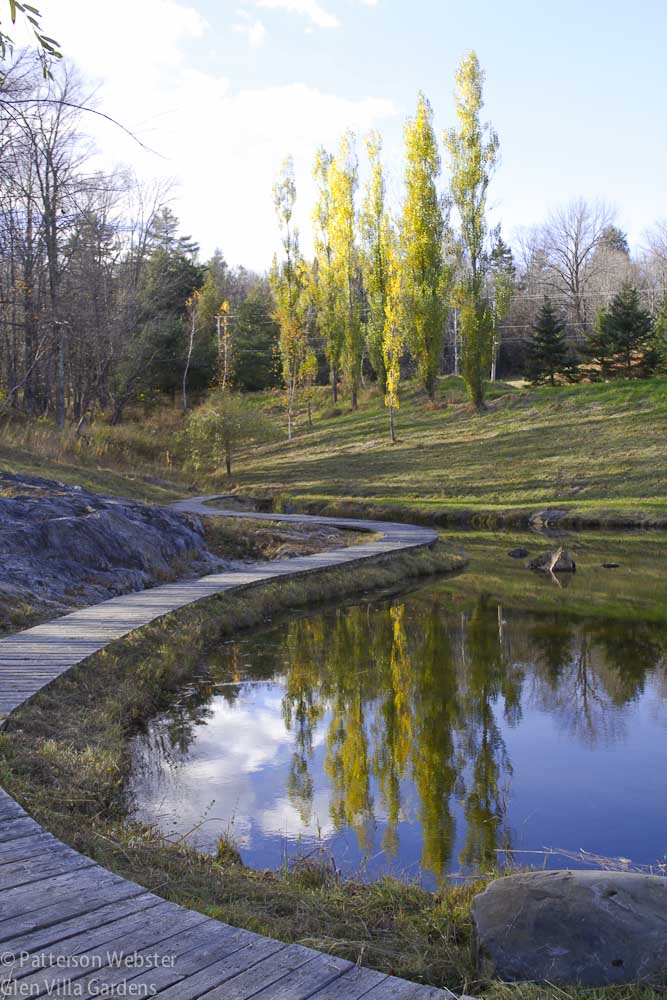
The intensity of colour is affected by the angle of light. Here the actual sky appears washed out in comparison to its reflection. The trees also look greener in the water.
Still water can play tricks with colour; moving water can do even more. Trees and autumn foliage become as abstracted as a painting — not in oil or acrylic but in coloured water.
Turbulent water reflects motion alone.
But even still water doesn’t always offer a good reflecting surface. At certain times of the day or in certain seasons, this canal at Broughton Grange in England may mirror the sky, the trees or the plantings around it. But when I was there, it was a flat pewter surface that reflected greyness and dampened my appreciation of the garden, designed by the Chelsea Gold Medal winner, Tom Stuart-Smith.
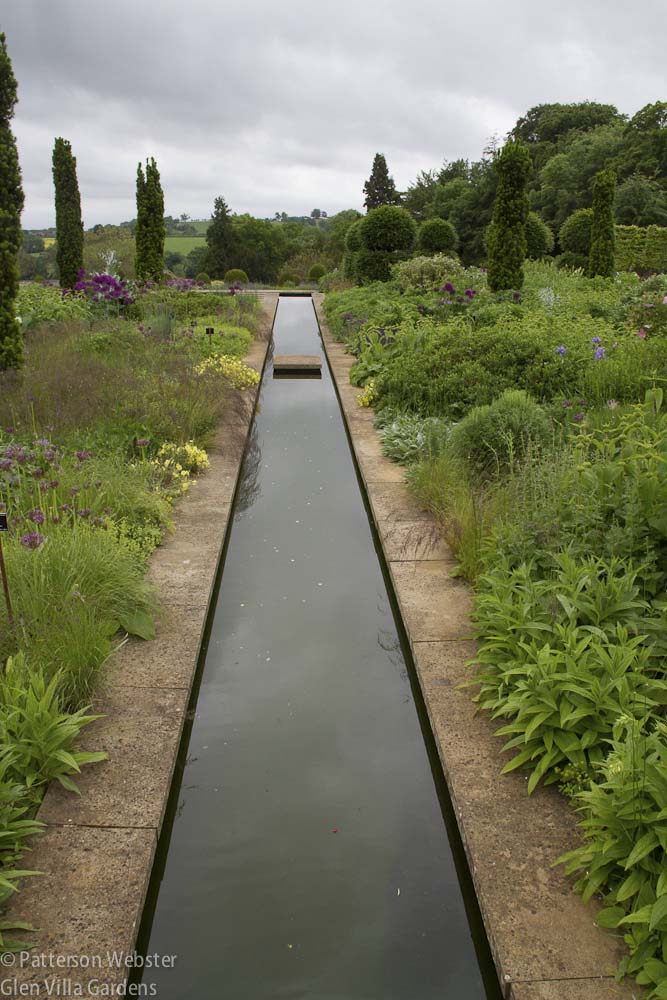
A canal moves through dense plantings on one level of the Walled Garden at Broughton Grange in England.
The clarity of the water matters — the clearer the surface, the sharper the reflection — and clarity can be a function of water temperature. I took the photo below at the end of an October day, when the water temperature in the Skating Pond at Glen Villa had dropped enough to kill off the vegetation that grows in warmer months.
Muddy water or pools where the surface is mostly covered with vegetation are not good reflectors. Water that sparkles in sunlight isn’t either — unless you want to send a message about light alone. Dark water is different. When dark water is still and calm, it captures reflections superbly and can add an air of mystery to any garden tableau. From straight on, the undulating hedges at Veddw, a garden in Wales, suggest a labyrinthine path leading into the woods beyond. Reflected, they suggest a watery road to a dark and hidden world.
Using water to reflect the surroundings can do more than enhance a garden and double the viewing pleasure. This Chinese-style bridge that forms a perfect circle when reflected in the water alludes to other gardens in other places, built in other times. The allusion connects the North American garden to an historic Chinese garden tradition and, in doing so, adds richness to the experience of being there.

The moon bridge is at Les Quatre Vents, a garden in Quebec designed by the late Frank Cabot, founder of The Garden Conservancy.
Reflections in water can offer views of the world we might otherwise miss. I took the photo below on a clear day. Was I looking up or looking down? It’s not easy to say. That uncertainty is slightly disorienting — a good thing, in my books. Being disoriented makes us look harder, as we try to make sense of what we see.
Water isn’t the only reflecting surface — there are many other materials we can use — but it is one of the easiest. Next week I plan to look at other types of reflecting surfaces and consider the effects they create in a garden.
But before then, take a minute to share your thoughts. Have you included something in your garden that reflects what surrounds it? If you have, what did you want to achieve? I’d love to know.




